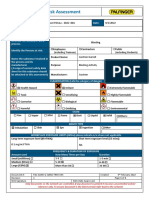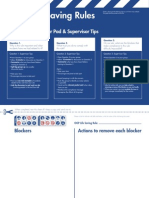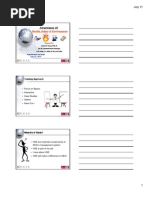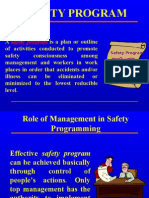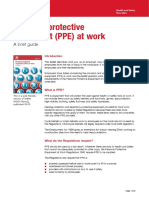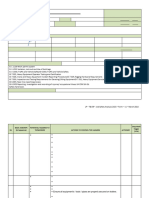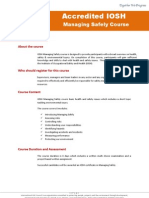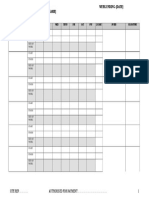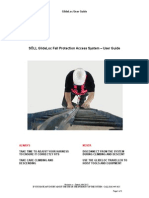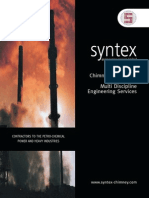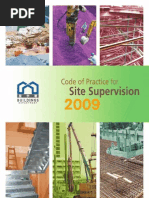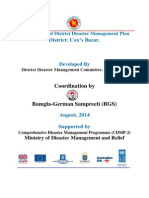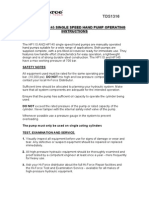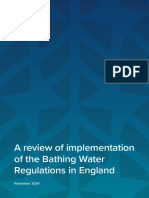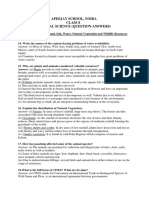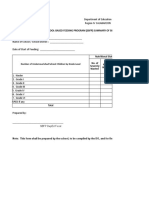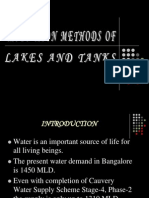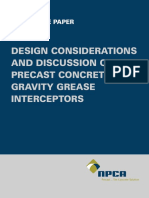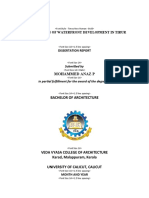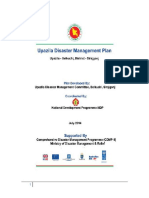COSHH Assessment: Product Name Supplier Date Ref No. Chemical Identification PPE Requirements
COSHH Assessment: Product Name Supplier Date Ref No. Chemical Identification PPE Requirements
Uploaded by
PaulSwinbankCopyright:
Available Formats
COSHH Assessment: Product Name Supplier Date Ref No. Chemical Identification PPE Requirements
COSHH Assessment: Product Name Supplier Date Ref No. Chemical Identification PPE Requirements
Uploaded by
PaulSwinbankOriginal Description:
Original Title
Copyright
Available Formats
Share this document
Did you find this document useful?
Is this content inappropriate?
Copyright:
Available Formats
COSHH Assessment: Product Name Supplier Date Ref No. Chemical Identification PPE Requirements
COSHH Assessment: Product Name Supplier Date Ref No. Chemical Identification PPE Requirements
Uploaded by
PaulSwinbankCopyright:
Available Formats
Syntex Engineering Services
COSHH Assessment
Product Name Brilube 70 Chemical Identification Wire Rope Lubricant Supplier R.S. Clare & Co Ltd Date Ref No. 20/02/2013 SYN 041
PPE Requirements Flame proof overalls Eye protection (safety glasses / goggles) Impervious Safety gloves (to EN 374) (Short Term; protection class 2, Long Term; protection class 6)
Mel/OES Please refer to page 2.
safety gloves eye protection
overalls
Medical/First Aid Inhalation Eye contact Skin contact Ingestion Burns General Remove to fresh air. Keep patient warm and at rest. Irrigate copiously with clean, fresh water, holding the eyelids apart. Remove contact lenses. Seek medical advice. Wash skin thoroughly with soap and water or use recognized skin cleanser. Do NOT use solvents or thinners. If accidently swallowed immediately rinse mouth and provide fresh air. Keep at rest. Do NOT induce vomiting. If spills on clothing catch fire, wash with plenty of water. Remove loose clothing. Do not remove clothing that has melted to the skin. Obtain medical attention. When symptoms persist or in all cases of doubt seek medical advice. Never give anything by mouth to an unconscious person.
Extinguishing Media Use fire fighting media appropriate for surrounding materials and hazards. Combustion creates Carbon Dioxide (CO2) and Carbon Monoxide (CO).
Special Precautions NO SMOKING / NO NAKED FLAMES. Avoid breathing vapours. Avoid skin and eye contact. Wear Correct PPE.
Workplace Assessment Details Whilst within all preparation and application areas smoking, eating and drinking is strictly prohibited . Wear PPE as specified. Use of barrier cream may be used to protect any skin that may be exposed. Do not apply barrier cream after the product has touched the skin. Work to be undertaken in well ventilated area. When not in use the product is to be stored in a well ventilated, dry place away from sources of heat and direct sunlight. Containers which have been opened must be carefully resealed and kept upright to prevent leakage, and too be kept within original container or one of the same materials. For Physical and Chemical properties please refer to page 2. Exposure limits Material Residual Oils (Petroleum) Short term (15min. ave) ppm Mg/m 10 (Oil mist) Long term (8hr TWA) ppm Mg/m 5 (Oil mist) Comments
Xn Harmful
Xi Irritant
N Harmful to the Environment
Assessment Completed By: P. Swinbank
Assessment Approved By: P. Ford Review Date: February 2014
COSHH Assessment - Original
Syntex Engineering Services
COSHH Assessment
Waste Disposal Classified as special waste. Dispose of through authorised waste contractor to a licensed site. Do not empty into drains, sewers or water courses. Accidental Release Measures Personal precautions : Environmental precautions: Methods for cleaning up: Additional advice: Spilt product constitutes a significant slip hazard. Avoid exposure of product to sources of ignition. Try to prevent entry of hot material into drains, sewers and watercourses. Scrape or shovel up and transfer to a suitable container for disposal by the appropriate route. Clean the affected area. Refer to specific local regulations. Mel/OES (hazardous ingredients) Ingredient Residual oils (Petroleum) CAS Number Weight (%) Symbols Risk phrases R10 Flammable R21/22 Harmful in contact with the skin and if swallowed
Physical and chemical properties Physical State Odour Odour Threshold pH Melting Point/freezing point (C) Initial boiling point and boiling range (C) Flash Point (C) Evaporation rate (Ether =1) Flammability (solid, gas) Upper/lower flammability or explosive limits (As % volume) Vapour pressure (Pa) Vapour density Relative density (at 20C) Solubility(ies) Partition coefficient n-octanol/water (Log Kow) Auto-ignition temperature (C) Decomposition temperature (C) Viscosity (cSt) Flow Time Grease Characteristic >230 Lower Explosive limit: -% (- g/m3) Upper Explosive limit: -% (- g/m3) 0.85 0.95 g/cm3 Stability and Reactivity Reactivity Chemical stability Possibility of hazardous reactions Conditions to avoid Incompatible materials Hazardous decomposition products No dangerous reaction known under conditions of normal use. Stable under normal temperature conditions. Will not polymerise. Avoid sources of ignition. Incompatible with oxidizing substances. Irritating gasses/vapours/fumes of Carbon Dioxide (CO2) and Carbon Monoxide (CO).
COSHH Assessment - Original
You might also like
- Project Hse Plan Rev2 - ScribdDocument35 pagesProject Hse Plan Rev2 - ScribdPaulSwinbank95% (38)
- Underground Piping Pressure Test RecordDocument1 pageUnderground Piping Pressure Test RecordPaulSwinbankNo ratings yet
- Accident InvestigationDocument10 pagesAccident InvestigationHeli Senn Ventenilla100% (1)
- Example JSA Job Safety AnalysisDocument13 pagesExample JSA Job Safety AnalysisPaulSwinbank100% (5)
- Example Inspection Test PlanDocument2 pagesExample Inspection Test PlanPaulSwinbank100% (1)
- Safety TerminologiesDocument24 pagesSafety TerminologiesAnne Kathreen ArejolaNo ratings yet
- Confined Spaces CardsDocument1 pageConfined Spaces CardsJafar KhanNo ratings yet
- Safety Data Sheet: Nitobond Ep Slow Set BaseDocument3 pagesSafety Data Sheet: Nitobond Ep Slow Set Baseadil khanNo ratings yet
- Safety Induction FormatDocument2 pagesSafety Induction FormatSubhadatta NayakNo ratings yet
- HSEkpisDocument14 pagesHSEkpissam lissenNo ratings yet
- HSE Training ProgramDocument5 pagesHSE Training Programbotahra0% (1)
- HSE New Hire OrientationDocument118 pagesHSE New Hire OrientationAbdullah AnarNo ratings yet
- Permit To Work at HeightsDocument2 pagesPermit To Work at HeightsVinod MNo ratings yet
- H&S Induction Training PresentationDocument10 pagesH&S Induction Training PresentationSanthosh Mech100% (1)
- 4.3.1 Hazard Identification, Risk Assessment and Risk Control (Repaired)Document4 pages4.3.1 Hazard Identification, Risk Assessment and Risk Control (Repaired)Nagendra Kumar SinghNo ratings yet
- Hse Award Categories DetailsDocument7 pagesHse Award Categories DetailsnmamNo ratings yet
- Environmental ChecklistDocument5 pagesEnvironmental ChecklistKaycee ChirendaNo ratings yet
- Confind SpaceDocument11 pagesConfind Spacesolomonbeg100% (1)
- Welcome: TO Sun Valley Clark HUB Safety InductionDocument92 pagesWelcome: TO Sun Valley Clark HUB Safety InductionAlvin John Dionisio100% (1)
- Mechanism 8 Feb 2016Document35 pagesMechanism 8 Feb 2016Abdul HaneefNo ratings yet
- Chelston Decorators Health and Safety PolicyDocument13 pagesChelston Decorators Health and Safety PolicySam MurrayNo ratings yet
- Workplace Inspection Checklist: General Yes No NotesDocument4 pagesWorkplace Inspection Checklist: General Yes No NotesLakshmi BalaNo ratings yet
- Cossh Risk Assessment - Austren GarnetDocument3 pagesCossh Risk Assessment - Austren GarnetKishor KoshyNo ratings yet
- LifeSavingRules NotepadDocument2 pagesLifeSavingRules NotepadInternational Association of Oil and Gas ProducersNo ratings yet
- Vishal Tarai - HSE Manager - Firestone GlobalDocument6 pagesVishal Tarai - HSE Manager - Firestone GlobalibrahimNo ratings yet
- Miles - PPE Management Plan 2018Document14 pagesMiles - PPE Management Plan 2018Anold MedardNo ratings yet
- ED2 SampleDocument53 pagesED2 SampleadelNo ratings yet
- HSE Awareness Training MaterialsDocument10 pagesHSE Awareness Training MaterialsAshraf S. YoussefNo ratings yet
- AFC-HSE-F01 - HSE Induction RecordDocument1 pageAFC-HSE-F01 - HSE Induction RecordIbrahim MohamedNo ratings yet
- BGP Visitor HSE InductionDocument2 pagesBGP Visitor HSE InductionittehadNo ratings yet
- Working in Cold EnvironmentsDocument6 pagesWorking in Cold EnvironmentsmfmtNo ratings yet
- OSHAD-SF - TG - Communication and Consultation v3.0 EnglishDocument18 pagesOSHAD-SF - TG - Communication and Consultation v3.0 EnglishNiel Brian VillarazoNo ratings yet
- Crane Safety PosterDocument2 pagesCrane Safety PosterJuzer MotorwalaNo ratings yet
- Safety Observation Card TemplateDocument1 pageSafety Observation Card TemplatePermana Eka SatriaNo ratings yet
- TBT LogDocument9 pagesTBT LogfatehNo ratings yet
- Ppe Presentation-1Document17 pagesPpe Presentation-1api-273092669No ratings yet
- Welcome To Emarat: Heat StressDocument19 pagesWelcome To Emarat: Heat StressSYED NEYAZ AHMADNo ratings yet
- Safety Program (d1)Document21 pagesSafety Program (d1)elvis hidalgoNo ratings yet
- SDS Alcad BDX en Aug10Document4 pagesSDS Alcad BDX en Aug10Suthep LairusameeNo ratings yet
- Monsoon Safety Monsoon Safety: Delivery, India RegionDocument6 pagesMonsoon Safety Monsoon Safety: Delivery, India RegionGaurav PandeyNo ratings yet
- GPCL-025 Emergency Response Plan Rev.0Document20 pagesGPCL-025 Emergency Response Plan Rev.0Omar WardehNo ratings yet
- RA of Front Hand LoaderDocument6 pagesRA of Front Hand LoaderkoketsoNo ratings yet
- Crane Risk AssesmentDocument8 pagesCrane Risk AssesmentGilang ArdiNo ratings yet
- Project Risk RegisterDocument23 pagesProject Risk RegistersajinNo ratings yet
- Chemi Cals: Chemical Are Synthesised or Naturally Occurring Substances (Solid, Liquid or Gaseous) With Unique PropertiesDocument217 pagesChemi Cals: Chemical Are Synthesised or Naturally Occurring Substances (Solid, Liquid or Gaseous) With Unique PropertiesAdebiyi Adeleke AdesounNo ratings yet
- INSP1 MobileCraneDailyInspectionDocument1 pageINSP1 MobileCraneDailyInspectionFuzail Ayaz100% (1)
- HPCL Disaster MGMT Control PlanDocument64 pagesHPCL Disaster MGMT Control PlanKiran BhattNo ratings yet
- SCAFFOLDDocument12 pagesSCAFFOLDMIAN MATEENNo ratings yet
- H S Inspection ChecklistDocument8 pagesH S Inspection ChecklistVepxvia NadiradzeNo ratings yet
- Personal Protective Equipment (PPE) at Work: A Brief GuideDocument6 pagesPersonal Protective Equipment (PPE) at Work: A Brief GuideMohamed Omar100% (1)
- 1.) Client OH&S Specification (Please Only Use The Relevant Sections)Document78 pages1.) Client OH&S Specification (Please Only Use The Relevant Sections)Fadley ValleyNo ratings yet
- JSA For Abqaiq Chiller Plant Demolition Rev-00Document10 pagesJSA For Abqaiq Chiller Plant Demolition Rev-00anilkumar.light2024No ratings yet
- Safety Data Sheet: Delo Gold Ultra SAE 15W-40Document6 pagesSafety Data Sheet: Delo Gold Ultra SAE 15W-40Nasta Ina RobayasaNo ratings yet
- Safety Moment - PPEDocument1 pageSafety Moment - PPEtimbulNo ratings yet
- Work Permit SystemDocument35 pagesWork Permit SystemClementKelvinTaiNo ratings yet
- Coshh Assessment FormDocument4 pagesCoshh Assessment FormLsri MurthyNo ratings yet
- ADCO InterviewDocument4 pagesADCO InterviewfrancisNo ratings yet
- 2.HSE Report Month of January 2022Document7 pages2.HSE Report Month of January 2022Amit kumar thakurNo ratings yet
- Basic Safety Procedure in High Risk Activities and IndustriesDocument10 pagesBasic Safety Procedure in High Risk Activities and IndustriesKent Daniel DinopolNo ratings yet
- IOSH Managing SafelyDocument3 pagesIOSH Managing Safelyhsecouncil100% (1)
- COSHH FOR Sodium Metabisulfite (Food Grade) - BASF - MSDSDocument3 pagesCOSHH FOR Sodium Metabisulfite (Food Grade) - BASF - MSDSAhmad OmarNo ratings yet
- PTW MatrixDocument1 pagePTW Matrixjinyuan74100% (1)
- Hazard Awareness - SnakesDocument17 pagesHazard Awareness - Snakeshanabanana_yapNo ratings yet
- TDS - Resist 78 - English (Uk) - Issued.02.04.2010Document4 pagesTDS - Resist 78 - English (Uk) - Issued.02.04.2010PaulSwinbankNo ratings yet
- Sample Internal Time SheetDocument1 pageSample Internal Time SheetPaulSwinbankNo ratings yet
- Example ITPDocument1 pageExample ITPPaulSwinbankNo ratings yet
- GlideLoc Fall Protection - Basic User InstructionsDocument3 pagesGlideLoc Fall Protection - Basic User InstructionsPaulSwinbankNo ratings yet
- Syntex Engineering Services LTD BrochureDocument38 pagesSyntex Engineering Services LTD BrochurePaulSwinbankNo ratings yet
- Buildings Department Approved Materisla List CDBSFDocument47 pagesBuildings Department Approved Materisla List CDBSFPaulSwinbankNo ratings yet
- Hilti AnchorsDocument58 pagesHilti AnchorsPaulSwinbankNo ratings yet
- CODE of PRACTICE For Site SupervisionDocument120 pagesCODE of PRACTICE For Site SupervisionRaymond Kam100% (5)
- DM Plan Cox's Bazar District - English Version-2014Document185 pagesDM Plan Cox's Bazar District - English Version-2014CDMP Bangladesh100% (6)
- Hp110 and Hp145 Single Speed Hand Pump Operating InstructionsDocument5 pagesHp110 and Hp145 Single Speed Hand Pump Operating Instructionsadam150161No ratings yet
- JHEA Loading and Offloading FENCEDocument13 pagesJHEA Loading and Offloading FENCEStansilous Tatenda NyagomoNo ratings yet
- EagleBurgmann - DMS - TSE - E5 - Brochure Mechnical Seal Technology and Selection - EN - 16.05.2017 PDFDocument58 pagesEagleBurgmann - DMS - TSE - E5 - Brochure Mechnical Seal Technology and Selection - EN - 16.05.2017 PDFImmanuel AutomatonNo ratings yet
- E03186003_OEP Bathing Water England_AccessibleDocument93 pagesE03186003_OEP Bathing Water England_AccessibleGeorge TownsendNo ratings yet
- AbstractDocument6 pagesAbstractsaranyaveenaNo ratings yet
- 03a Boiler-Parameters P-Bader EDocument23 pages03a Boiler-Parameters P-Bader EAira NamoroNo ratings yet
- Chapter 2-Land, Soil, Water, Natural Vegetation Wildlife Resources - QA - PrintoutiDocument3 pagesChapter 2-Land, Soil, Water, Natural Vegetation Wildlife Resources - QA - PrintoutiWutashiNo ratings yet
- Mount Polley Mine Tailings Storage Facility Report On 2010 Annual Inspection, by Knight PiesoldDocument93 pagesMount Polley Mine Tailings Storage Facility Report On 2010 Annual Inspection, by Knight PiesoldThe Vancouver Sun100% (2)
- SBFP Wins Good PracticesDocument6 pagesSBFP Wins Good PracticesAnitsirc Airam Zurc AledNo ratings yet
- Daily Test 1Document7 pagesDaily Test 1018-Diska LathifahNo ratings yet
- Restoration Methods of Lakes and TanksDocument18 pagesRestoration Methods of Lakes and TanksupirajNo ratings yet
- Food Chains and Food WebsDocument3 pagesFood Chains and Food WebsDonna Rose CruzNo ratings yet
- 000 Method StatementDocument69 pages000 Method StatementRamBhadraPenmatsa0% (1)
- Geothermal EnergyDocument19 pagesGeothermal EnergyGanesh harikantraNo ratings yet
- Ew 1278 FDocument26 pagesEw 1278 FwidhiantoNo ratings yet
- Map ListDocument3 pagesMap Listcenroargao.gisNo ratings yet
- Water - Reader Exercise & RevisionDocument26 pagesWater - Reader Exercise & RevisionChristo JeniferNo ratings yet
- Vinh An - Building Applicaton-EnDocument13 pagesVinh An - Building Applicaton-EnCuong Pham HuyNo ratings yet
- ĐỀ THI SỐ 12Document8 pagesĐỀ THI SỐ 12Nguyễn Bảo Gia HânNo ratings yet
- Ecohome Designs Magazine - Summer 2011Document196 pagesEcohome Designs Magazine - Summer 2011ED WordNo ratings yet
- Cassava HandbookDocument114 pagesCassava HandbookEnggar Handarujati100% (2)
- Kennecott Utah Copper's Bingham Canyon Mine: Teacher GuideDocument6 pagesKennecott Utah Copper's Bingham Canyon Mine: Teacher Guideitalodex100% (1)
- Saudi Arabian Deal Marks A Breakthrough For Subsea Desalination - Global Water IntelligenceDocument4 pagesSaudi Arabian Deal Marks A Breakthrough For Subsea Desalination - Global Water IntelligencejohnNo ratings yet
- Grease Interceptor DesignDocument12 pagesGrease Interceptor DesignMarius Carlo Manahan ValenzuelaNo ratings yet
- River Front Development.2 - 125523Document24 pagesRiver Front Development.2 - 125523Anaz AnazNo ratings yet
- Hydrology Notes PDFDocument130 pagesHydrology Notes PDFNhlanhla Chiferere100% (1)
- DM Plan Belkuchi - English PDFDocument261 pagesDM Plan Belkuchi - English PDFTouhid IslamNo ratings yet
- MEPC-OPRC-HNS-TG 6-3-2 Manual On Oil Pollution Section I Prevention PDFDocument13 pagesMEPC-OPRC-HNS-TG 6-3-2 Manual On Oil Pollution Section I Prevention PDFYao WeiNo ratings yet























